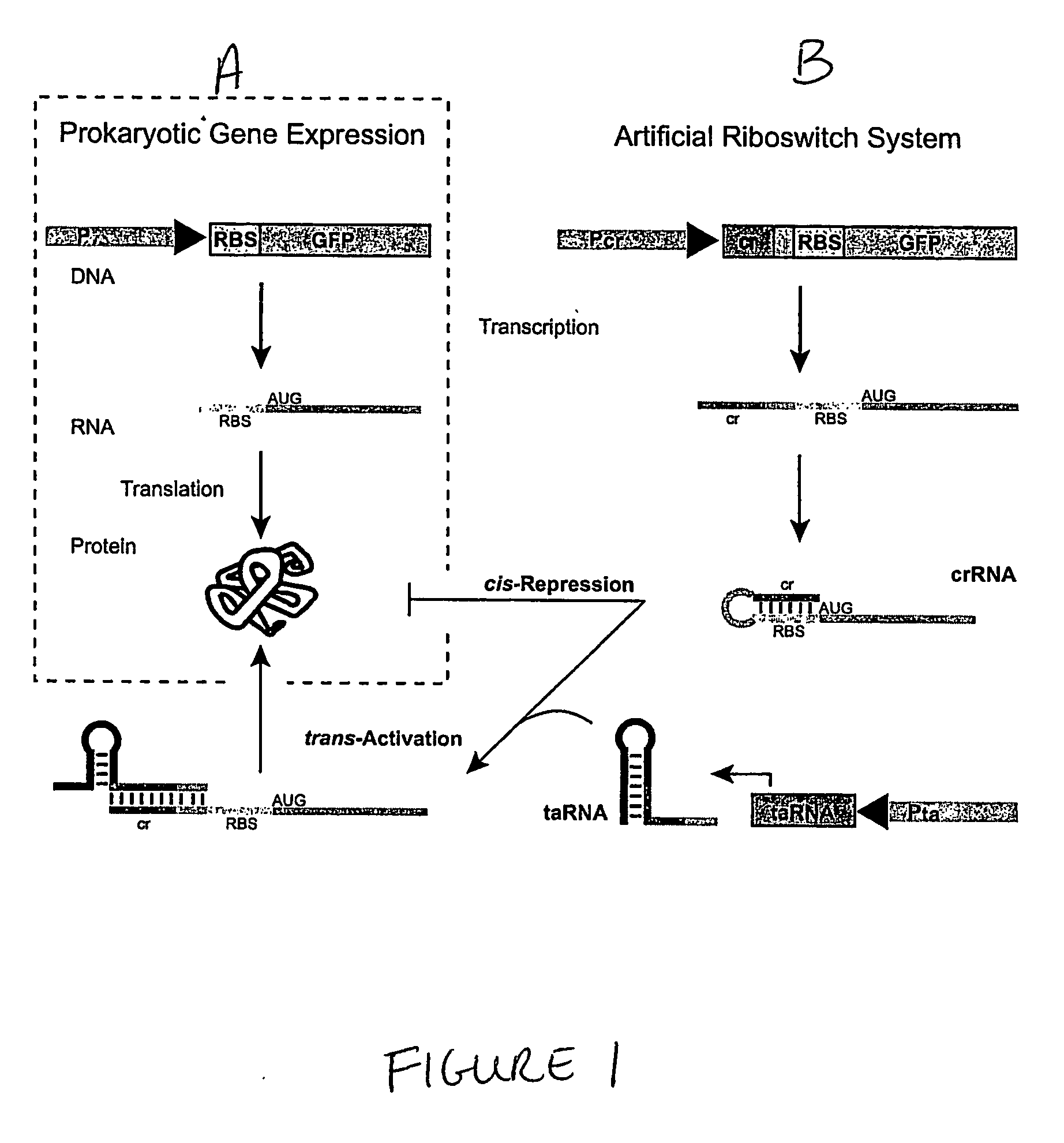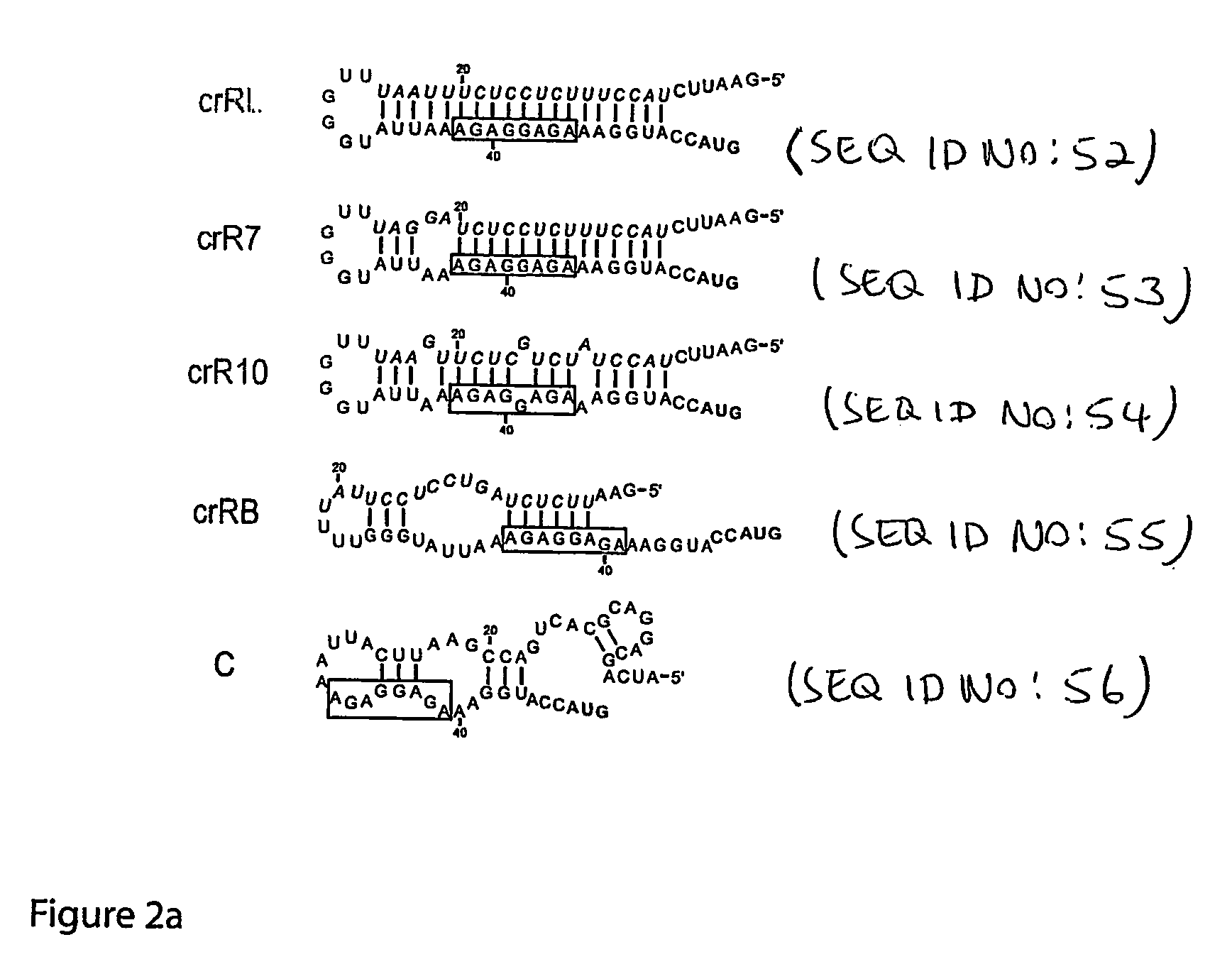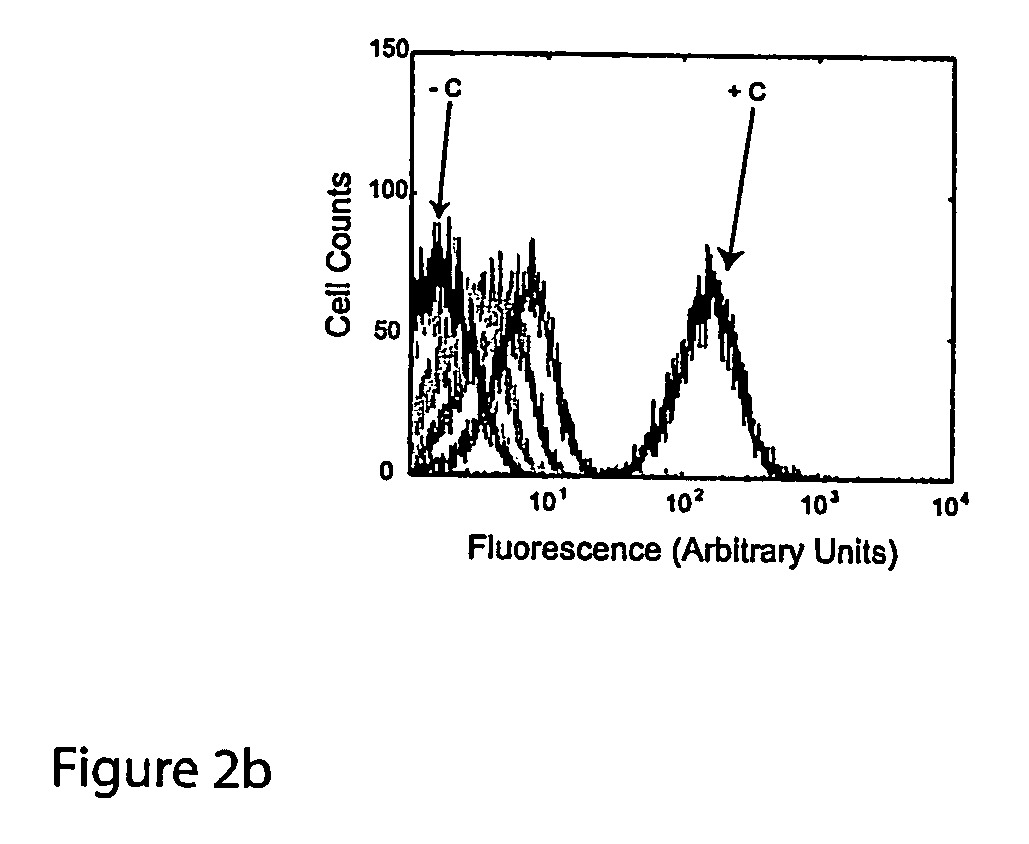Cis/trans riboregulators
a riboregulator and riboregulator technology, applied in the field of cis/trans riboregulators, can solve the problems of limiting the usefulness of modulation techniques, severe phenotypic defects, and general limitations of modulation techniques of transcription factors, and achieves precise control through highly specific rna-rna interactions, preventing translation, and altering the hairpin structure
- Summary
- Abstract
- Description
- Claims
- Application Information
AI Technical Summary
Benefits of technology
Problems solved by technology
Method used
Image
Examples
example 1
Synthesis and Activity of Cis-Repressive RNA Elements
[0157] This example describes the design of a variety of cis-repressive RNA elements (crRNAs) and creation of DNA constructs that provide templates for their synthesis. The example further presents measurements demonstrating the ability of these RNA elements to repress translation of downstream coding sequences. Example 2 describes corresponding trans-activating nucleic acid elements (taRNAs) and their ability to activate gene expression by relieving the translational repression caused by the crRNAs.
[0158] Materials and Methods
[0159] Plasmid construction, cell strains, reagents: Basic molecular biology techniques were implemented as described in cloning manuals (47). Two riboswitch systems were constructed, in which each system utilized two separate promoters to drive the expression of the cis-repressive RNAs (crRNA) and trans-activating RNAs. In the first riboswitch, the PL(tetO) promoter drives expression of crRNA, and the pB...
example 2
Synthesis and Activity of Trans-Activating RNA Elements
[0180] This example describes the creation of DNA constructs that provide templates for synthesis of a variety of different trans-activating RNA elements that operate in conjunction with corresponding cis-repressive RNA elements described in Example 1. The example further presents measurements demonstrating the ability of these RNA elements to activate translation of coding sequences whose translation was previously repressed by the corresponding cis-repressive RNA.
[0181] Materials and Methods
[0182] See example 1.
[0183] Results
[0184] Small, trans-activating RNAs (taRNAs), designed to cause the crRNAs described in Example 1 to undergo structural transformation to expose the RBS and initiate translation, were produced. The taRNA sequences were selected so as to direct loop (crRNA)-linear (taRNA) RNA pairing The mode of RNA-RNA interaction was designed based on several characterized natural RNA systems (17, 34), e.g., the hok / ...
example 3
Specificity of Cis-Repressive and Trans-Activating RNA Pairs
[0188] Materials and Methods
[0189] Equilibrium constant measurements: The equilibrium constants for complexes between the cis-repressive and trans-activating RNAs can be measured in several different ways. Classic methods include electrophoretic mobility shift assays in polyacrylamide gels containing divalent cations (49). Here, we use an approach based on the property of reverse transcriptase, which stalls and terminates on stable RNA duplexes. When hybridized to crRNA, taRNA creates an obstacle for the reverse transcriptase, yielding a truncated product The amount of truncated transcripts versus full length transcripts is assayed by polyacrylamide gel electrophoresis. From these data one can calculate equilibrium association and dissociation constants. This method is advantageous over classic methods because it uses fluorescence rather than radioactive probes and does not involve RNA cross-linking agents.
[0190] Step 1:...
PUM
| Property | Measurement | Unit |
|---|---|---|
| temperatures | aaaaa | aaaaa |
| concentration | aaaaa | aaaaa |
| total volume | aaaaa | aaaaa |
Abstract
Description
Claims
Application Information
 Login to View More
Login to View More - R&D
- Intellectual Property
- Life Sciences
- Materials
- Tech Scout
- Unparalleled Data Quality
- Higher Quality Content
- 60% Fewer Hallucinations
Browse by: Latest US Patents, China's latest patents, Technical Efficacy Thesaurus, Application Domain, Technology Topic, Popular Technical Reports.
© 2025 PatSnap. All rights reserved.Legal|Privacy policy|Modern Slavery Act Transparency Statement|Sitemap|About US| Contact US: help@patsnap.com



